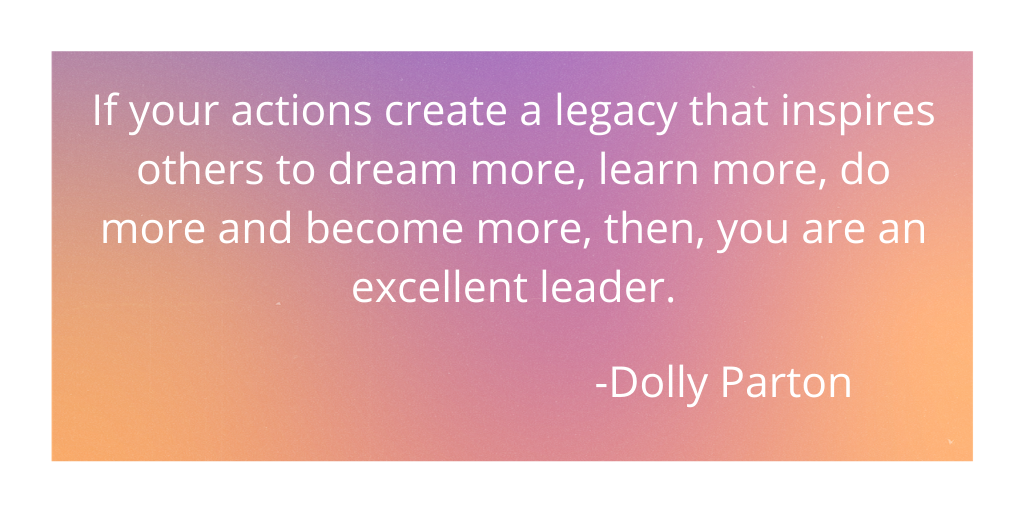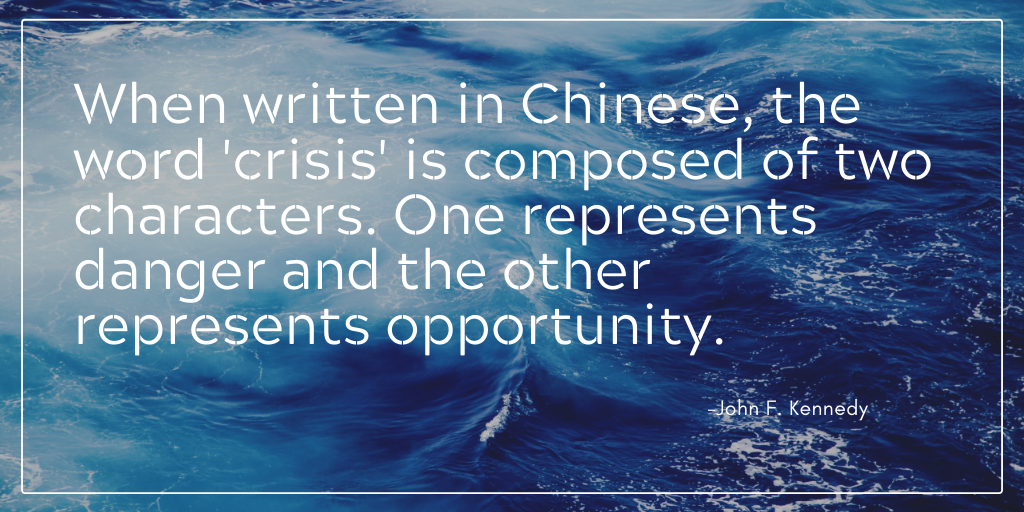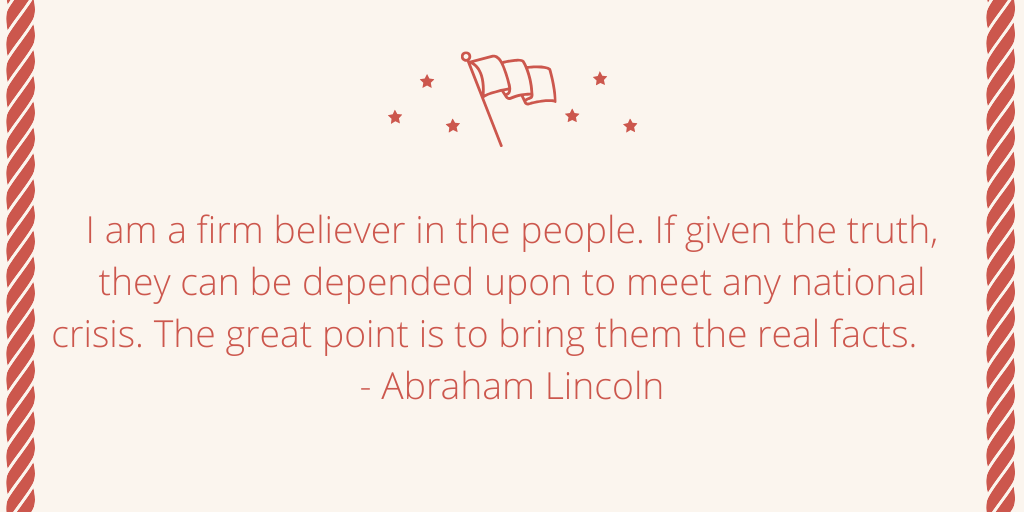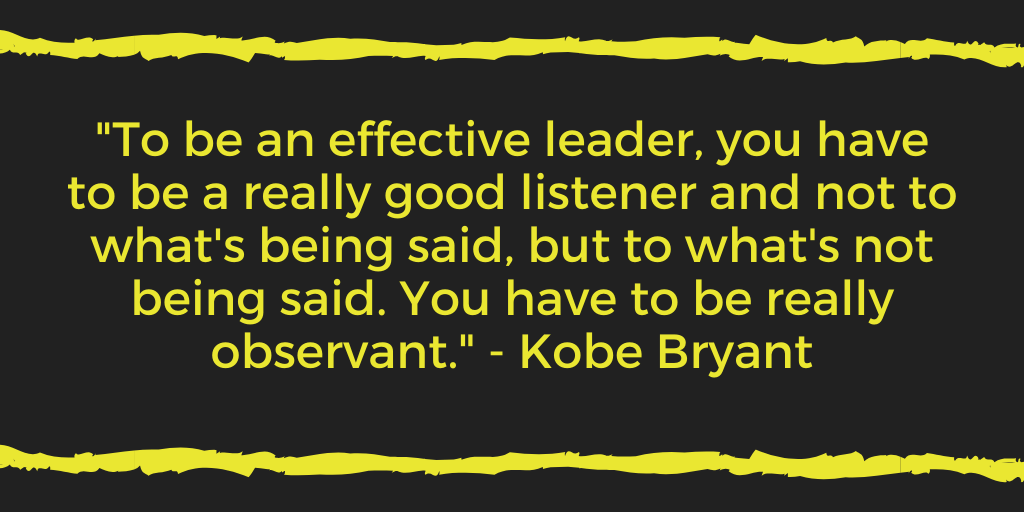Fitting Five: Your bi-monthly guide to education leadership resources and success stories from across the nation. (6/15/20)
- Probably the only thing that’s certain right now is that no one knows for sure what the next school year is going to look like,” says Jennifer Gonzalez in this Cult of Pedagogy article entitled, Reopening School: What it may look like. She goes on to share ideas she’s gathered from numerous sources on what might happen in the fall. Ideas may add to your own Return to Learn plan.
- In this Edutopia article, Nora Fleming acknowledges many students are struggling with remote learning, in homes without Internet, devices, or both, and it’s hard for teachers to replicate in-person dynamics. But a significant number of teachers described reasons that some students were doing better with online learning.
- Heather Hill (Harvard University) and Susanne Loeb (Brown University) explore how schools might deal with students’ predicted learning loss when schools reopen. Of course teachers deal with “summer slide” every year, but learning gaps will be bigger after three months of remote learning, and will vary significantly depending on home advantages, how well schools managed online learning, and the degree of trauma experienced by students. Gaps may be especially problematic for the youngest students, who are usually on a steep learning curve with reading, writing, math, and social skills.
- Todd Nordstrom suggests If Leaders Learn Just one Thing About Work During this Pandemic, This Should be It. Research from Stanford shows that employees allowed to work remotely are actually more productive than those who aren’t. He states, “The only thing you may need to change your mind about is this: our working world will never be the same after this has changed. We all have changed. Our world has changed.”
- The coronavirus pandemic that has left many businesses scrambling to survive, and many teams displaced amid quarantine orders. But this unprecedented time is an opportunity for the leaders and team members who decide to use it wisely, Sinek shares. Sinek shares his tips on how leaders and all professionals can pursue their goals while working together as a team.
May 11, 2020
- 7 leadership traits for the post COVID-19 workplace. COVID-19 has not just changed the world but also changed the DNA of our workplace ecosystem in many ways. Our leaders must change as well to lead effectively in this new era. If this pandemic experience has taught us anything, it’s that leadership matters and for many organizations facing decidedly fragile futures, it may matter now more than ever as the country tries to emerge from forced hibernation and rebuild a broken economy. Throughout this tragedy, we’ve witnessed certain leadership traits and approaches that may have made the difference between life and death. Similarly, our organizations will require distinct leadership traits to restore and revive stressed and flailing supply chains, product lines, even entire industries. (Forbes)
- The psychology behind effective crisis leadership. When I ask groups of managers what makes a good leader, I seldom have to wait long before someone says, Vision! and everyone nods. I have asked that question countless times for the past 20 years, to cohorts of senior executives, middle managers, and young students from many different sectors, industries, backgrounds, and countries. The answer is always the same: A vision inspires and moves people. Expansion, domination, freedom, equality, salvation—whatever it is, if a leader’s vision gives us direction and hope, we will follow. If you don’t have one, you can’t call yourself a leader. (Harvard Business Review)
- We need state leadership to re-start K-12 education. But as the educational picture has come into focus, it is clear that students are losing critical months of learning. The students who can least afford to lose that learning English learners, foster youth and students with disabilities are taking the biggest hits. Addressing this situation will take state leadership.The planning should begin with recognizing the limitations of virtual learning. Overburdened parents are thankful for anything that engages their children, but ensuring availability of internet access and devices are just the first steps. Every other element is dependent on the capacity of teachers, students and parents. (Edsource)
- Seven distance learning priorities to consider before reopening schools. It's trying to rethink a base societal structure that has been serving communities for a hundred years, and then we just stopped and tried to send a version of that into their homes, said Laufenberg. Schools provide education, medical care, counseling services, technology, transportation, physical activity, meals and a place for kids to be. Without schools, parents can’t work; and businesses can’t function without its workforce. Children miss out on developmental needs they typically get at school. (KQED)
- 8 critical lessons to come out of the coronavirus crisis. In a matter of days, shutdowns and physical social distancing measures due to the coronavirus pandemic led to a dramatic shift in consumer values and behavior. It heavily impacted businesses and interrupted our way of life. Close to two months later, the landscape hasn’t changed much. Employees still worry about the security of their jobs while employers struggle to figure out how to appropriately navigate these unprecedented times. I have lived through something similar as a founder and CEO during the 2001 dot-com burst and the 2008 financial crisis. In both instances, the industry survived and eventually recovered, and I learned some valuable lessons about the resilience of companies during periods of economic downturns. These are the hard-won lessons we can take with us on the other side of this unpredictable period of volatile market conditions and tremendous change. (Fast Company)
April 20, 2020
- Harvard Edcast: School Leadership During Crisis. There is no guidebook for school leaders as they make decisions and try to move forward during the pandemic. With more than 55 million children out of school right now, Professor Deborah Jewell-Sherman knows that the uncertainty is a challenge for school leaders who are often used to orderliness and control. “Every school, and every school district has a crisis plan. But a crisis of this magnitude has been unimaginable,” she says. In anyone's worst case scenario, we didn't envision something like this.” In this week’s Harvard EdCast, Jewell-Sherman offered advice for school leaders navigating to a new normal in the COVID-19 crisis. (Harvard Graduate School of Education)
- USDE announces governors’ process for education funds under the CARES act. On April 14, 2020, the United States Department of Education (USDE) announced the process for Governors to attain funds from the Governor’s Emergency Education Relief Fund (GEER Fund) The fund was allocated out of the CARES Act at $2,953,230,000. A state-by-state allocation of the GEER Fund can be found here. (K20Connect)
- CARES Act stimulus funds and grants: what K-12 districts need to know. In a time when unity is particularly important, Congress reached a bipartisan agreement to pass a $2.2 trillion dollar stimulus package. The aim is to pump funds to citizens as well as agencies that are providing essential services during the COVID-19 pandemic. In this historic funding package (known as the CARES Act), $16.5 billion is set to go directly to state and local education agencies. (Tech & Learning Magazine)
- 74 Interview: former secretary of education Arne Duncan urges “empathetic leadership” through “brutal” coronavirus crisis and toward a new normal. The leadership, the creativity, the sense of camaraderie and sharing of ideas at the state and local level, I think, has been unbelievable. Whether it’s around the health care piece of this, whether it’s around the education piece of this, everybody’s learning together. There is no competition. Everybody’s trying to win together. Folks are failing and making mistakes, but they’re sharing that with real humility and vulnerability and helping people learn and not replicate those mistakes. The empathetic, humble leadership I’m seeing at the state and local level that’s what continues to give me hope every single day. (The 74)
- What the toilet paper shortage can teach us about 5 leadership styles. Larry Dorie is the CEO and cofounder of RHUB Communications, a company that’s been on the front lines of deploying remote technologies during COVID-19 quarantines to companies in the U.S. and abroad. Dorie shared, “Once I got over the initial shock of all of the missing paper products, I started to realize that this was a perfect situation for business executives to tap into to gain some meaningful leadership lessons that will make them better managers in both their personal and their professional life.†Among them, Dorie noted that three contrasting styles stood out. (Fast Company)
March 30, 2020
- Leading through Crisis. Leading and managing is not the same thing. This is true at any state of leadership but is especially evident during a crisis. Managers will delegate during a crisis and seek to establish order and perseverance to survive a tumultuous time. Order and survival are not bad goals for a leader to strive for. But they are mediocre. Making it through to the other side should not be the only objective in a crisis. A leader, through compassion and strategy, will understand the challenges that the company and its people are facing and be present and fighting on the front lines. A crisis is usually short lived but its implications, lessons learned, and reputation are often remembered for years to come. (Dr. Dallas Dance)
- Just in Time Virtual Learning Playbook. To help schools and districts make then needed rapid shift to remote learning, renowned edtech expert Dr. Kecia Ray has written "The Just in Time Playbook for Remote Learning” for Tech & Learning. This playbook provides an explanation of remote learning, describes the structured elements necessary for its success, and includes many resources for schools and higher education institutions to get started today. (Tech & Learning)
- Edtech gets boost in COVID-19 stimulus. The Senate & House passed a historic $2 trillion dollar package that has a major focus on improving both working and learning from home environments. The sudden closures of workplaces and schools across the nation have uprooted all of our lives, and nobody is feeling it more than educators who are working to provide equitable opportunities for every student in their district. This stimulus bill has a large focus on bolstering districts, especially when it comes to virtual learning opportunities. Iowa is estimated to receive approximately $77m specifically for virtual learning and services. (K20Connect)
- 4 signs to instantly identify a leader in crisis. To support your people in a time of fear and uncertainty and keep their hearts and minds engaged in their work, leaders must act with both fortitude and heart. Here are four otherwise counterintuitive habits to put into action right now. (Inc)
- Fight, flight or freeze: Evolve your leadership in this time of crisis. What will you do with this difficulty? Will you waste it on fear and hand-wringing and complaining? Will you focus on what you cannot do and what privileges have been taken from you? Or will you step up into the unknown with calm and generosity and a dedication to serving others? Crisis provides an opportunity for us to be better, to engage at a higher level than the last crisis we muddled through. In short, you have the chance to grow and evolve yourself and your responses. When you are anxious and uncertain, the best place to start is by engaging the most evolved part of your brain. (Forbes)
March 2, 2020
- Give compassionate feedback while still being constructive. Imagine a company where directness is prized above all else. Managers deliver blunt, harsh feedback in the name of efficiency. Now, imagine another company with a very different culture. Here, directness is nowhere to be found. Managers are accommodating and kind, overlooking mistakes or issues so as not to hurt feelings. What’s the problem with each? The first creates a toxic culture of brilliant jerks that drives people out and eats itself from within. The second ignores issues until they build up and affect business metrics. We have all seen these companies in the news, as a trending topic or even firsthand. You may be at one now! But it’s when we combine directness and compassion that we create a culture in which people can truly thrive at work. (New York TImes)
- 3 unconventional leadership strategies for boosting workplace productivity. In the future world of work, companies are poised to become more productive than ever before, with advances in technology and efficiency changing the way much of business is run. Yet, even as certain aspects of tomorrow’s corporate world become unrecognizable to today’s leaders, one thing will stay the same: An organization’s success will remain irrevocably tied to the productivity of its human workers. Thus, it is vital for leaders to develop strategies to keep their workers engaged and productive in a world of increasing distractions. Besides the well-known solutions, such as allowing for flexible hours and reducing the onslaught of emails, here are three innovative ways that leaders can boost their team’s productivity now and for years to come. (Forbes)
- The most important questions leaders need to ask their employees every day. When thinking about asking questions in the workplace, it is often perceived that the questions should be coming from new and junior staff. Those who ask questions in senior positions are often fearful of being perceived to have a lack of confidence or knowledge of the business.The reality is, question-asking only becomes more important as you climb the leadership ranks. (Inc)
- Every leader needs to navigate these 7 tensions. In surveys and interviews with hundreds of leaders worldwide, we uncovered seven core tensions between the traditional and emerging leadership approaches. Those tensions create significant stress for leaders, as they are often unsure of what competencies, skills, and behaviors to exercise in a particular context. In this article, we describe the tensions, and outline the dangers in ignoring them. (Harvard Business Review)
- Leadership that works: it’ all about the people. The best leaders have an unmistakable appetite for growth. They’re usually forward thinking. Sometimes, they’re even a bit restless (even when they are measured, patient, and personable); there’s an urgency to the way they approach their work and walk in the world. They always want to know: what’s next? Often, these top leaders read, question, probe and search endlessly for the next big idea or innovation. And that’s a good thing. A thirst for fresh ideas is what propels organizations towards bold initiatives that can make the world better. But as we look to emulate these leaders in our quest for the visionary and exciting, it’s important to not lose sight of the basics: our leadership bedrock. (Chief Executive)
February 17, 2020
- Get adventurous with your leadership training. Organizations spend billions of dollars each year on leadership development. Yet research has shown that many of these programs don’t seem to work — they fail to help individuals develop the sorts of dynamic, collaborative leadership skills needed for today’s work. In our research, teaching, and consulting on leadership development, we’ve been inspired by the success of one particular form: wilderness adventure expeditions, where people develop and refine their leadership as they and their team navigate the interpersonal and physical challenges of trekking through the wilderness. By forcing people to work collaboratively, develop new skills, and take control of their decisions and outcomes, the austere environment can help expose key facets of leadership and team interaction that might otherwise be overlooked in “normal” settings. (Harvard Business Review)
- Loneliness is crippling workplace productivity: here’s the leadership prescription. Loneliness is on the rise, according to a recent Cigna survey of more than 6,000 workers. Although it increased for members of every generation over the past year, loneliness remains most prevalent among millennials and Generation-Z, of whom nearly half report feeling lonely. While loneliness has life changing impacts on the individuals who experience it, it can also have serious consequences for the businesses at which they are employed. Lonely workers take twice as many sick days and demonstrate less commitment and weaker performance. Their emotions can spread to others, as well, causing a ripple effect throughout an organization. (Forbes)
- Increase employee retention by upping your leadership eq. In recent years, emotional intelligence, or EQ, has become a common and popular topic among managers and leaders. As a consultant who trains companies of all sizes on leadership and soft skills, I can tell you that it is by far one of the most needed areas of development in today’s workplace, and especially among leadership. But what is EQ really, and why is it so important? According to TalentSmart founder and Emotional Intelligence 2.0 author Travis Bradberry, “Emotional intelligence is the ability to manage ourselves and our relationships effectively" and it "is also an important indicator when it comes to performance prediction. Current studies indicate that it affects performance and success in areas including customer retention, increased sales, leadership, management and so many other facets.†With such noted impacts, managers and leaders must understand and improve their EQ in order to benefit from its effects in the workplace. (Entrepreneur)
- Warren Buffett says only 1 trait actually points to a great leader. Warren Buffett has provided plenty of hiring advice over the years. The billionaire's wisdom isn't exactly earth-shattering. For example, Buffett advises leaders to weigh integrity the heaviest of all traits when selecting top talent: "We look for three things when we hire people. We look for intelligence, we look for initiative or energy, and we look for integrity. And if they don't have the latter, the first two will kill you, because if you're going to get someone without integrity, you want them lazy and dumb." Buffett points to a person's character as the prime billing for a hiring decision. Without it, the most important element in your business's success is missing: trust. (Inc)
- 5 ways to break down the barriers for women to access leadership roles. Gender equality and getting more women into leadership roles are trending topics. Of the top 30 most used hashtags of 2019, five were specifically around women, from #WomenInSTEM to #PressforProgress and #WCW (Women Crush Wednesday). More awareness and conversation on gender is surely a good thing, but is this noise masking a lack of real action and progress? There is still a significant lag in fulfilling the promises of equality at work, with a 100-year gap from female representation in leadership to pay equity. (World Economic Forum)
February 3, 2020
- If you say yes to any of these 3 leadership questions, your leadership skills are way better than most managers. Leadership is a matter of the head and the heart--it's about results and relationships. So, if you're in a leadership role now or aspiring to one, the journey toward leadership greatness never ends. But it does have a starting point. And sometimes the beginning of the journey requires some tough questions you need to ask yourself to raise your own bar. Can you answer "yes" to any -- and hopefully all -- of these? (Inc.)
- Advanced leadership requires more than outside-the-box thinking. Sometimes, thinking outside the box isn’t ambitious enough to get real innovation flowing. In her new book, Rosabeth Moss Kanter encourages organization leaders to think much more broadly at what restricts creativity and how to overcome it. (Harvard Business School)
- The new leadership playbook for the digital age. Executives around the world are out of touch with what it will take to win, and to lead, in the digital economy. Digitalization, upstart competitors, the need for breakneck speed and agility, and an increasingly diverse and demanding workforce require more from leaders than what most can offer. Although a significant segment of the current generation of leaders might be out of touch, they still have control — over strategic decisions, who gets hired and promoted, and the culture of their organizations — but not for long. The need for change is urgent, and time is running out for leaders who are holding on to old ways of working and leading. (MIT Sloan)
- 10 successful women leaders share what they do to create a fantastic work culture. As business leaders, one of our main responsibilities is to create a culture where team members look forward to coming to work in the morning. Culture is what motivates people to perform, contribute and stay. Companies such as Zappos, MyFitnessPal and Gusto are renowned for their dedication to healthy work culture. These companies also attribute much of their success to their culture. In my role as the CEO of PROVEN Skincare, a fast-growing startup that is building its culture, this is a topic I care deeply about. So how does one create a thriving and welcoming work culture? In my column on Authority Magazine called "How I Thrive," I posed this question to several successful female leaders. (Entrepreneur)
- Clark county wants to improve school leadership. But what’s the definition of an effective principal? A beloved school leader isn’t enough to warrant job security, though. Jara said he kept James in place for two reasons—the positive climate she had built and the two-star school’s demonstrated academic progress on standardized tests. His decision underscores the balancing act administrators must walk to satisfy their constituency of students, staff, parents, district leaders and the state education department. But in a district with 362 schools and a perennial teacher shortage, the quality of school-based administrators can be an overlooked piece of the academic puzzle. (The Nevada Independent)
January 13, 2020
- Smart leaders manage themselves before managing others. The art of self-management largely involves managing one’s ambitions, one’s appetites and one’s insecurities. Would-be leaders tend to have these in great supply, and they serve as rocket fuel for their early career success . . . up to a point. The early success leads to the futility of Sisyphus or the fall of Icarus unless a leader learns to govern those qualities with some measure of discipline and restraint. (Forbes)
- Enterprise leadership: five big resolutions for 2020. One of the toughest development challenges is to elevate a critical mass of talent from executive management to true enterprise leadership. To move key talent from controlling systems, processes and financial performance to courageously create value creating significance, sustainability and purpose across an enterprise is no easy task. To move senior people from thinking and behaving downwards into a function, a geography, a division or a single team, to thinking, and collaborating and inspiring across all functions, across all geographies, across all divisions, across all teams and across all customer groups is a very complex and critical shift. Accelerating the development of executive managers into enterprise leaders may be the single most important factor in achieving your strategy and creating a more valuable and sustainable future. (Thrive Global)
- What’s working: SNHU recruits leaders from within. Nationwide, 45 percent of human resource managers surveyed last spring reported offering employees cross-training to develop skills not directly related to their jobs. And 87 percent offered professional development opportunities, according to an annual survey by the Society for Human Resource Management. Nazzaro knows many companies have limited resources, but he poses a question for company executives. “How are you helping your leaders develop their people?” he said. “A big piece of that is really providing the space and time for them to do it.” (New Hampshire Union Leader)
- Principals go to summer school to learn about leadership. A principal's job is increasingly complex, growing from school management to inspiring teachers, supporting families, and leading communities in crises such as bushfires, a Harvard University academic says. "It used to be a managerial role," she said. "That's not the case any more. Principals are tasked with paying attention to not just how the school operates but what happens in the classroom, being a community leader — especially now, given the devastation of the fires." (Sydney Morning Herald)
- 7 books to help you be a better leader in 2020. Sometimes, the problems start with founders and executives who neglect to focus on company culture early on. In other cases, companies struggle to maintain their culture across departments and managers as their headcount grows. If being a more conscientious, thoughtful leader is a priority for you, it’s important to both seek out advice and take stock of where other companies have gone wrong. Here are seven books that will help you take a critical look at your own company’s culture. (Fast Company)








